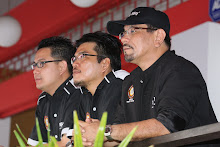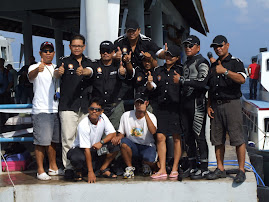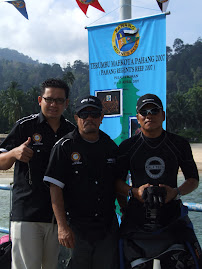Safety, commonsense and conservation are the golden words for enjoyable diving, now and in the future. The following tips are intended as a gentle reminder, particularly to holiday divers who only dive on an infrequent basis.
- Always make slow safe ascents. Stay neutrally buoyant throughout your ascent, maintain a head up vertical position and hold your deflator valve high and in view that you may visual confirm expanding air can escape. Monitor your dive computer to keep your ascent rate under 30 feet per minute. Don't rely on the 'smallest bubble' rule. Unless instructed otherwise by your divemaster, always make a safety stop of at least three minutes at 15 feet. Try to remain upright and as little movement as possible to effectively off gas. Once your safety stop is over, don't bolt for the surface. Take your time, maybe even 40 seconds for the last 15 feet
- Don't over weight yourself. Use as little lead as possible without being under weighted. Make a local orientation dive to be sure of your weighting and try hovering at 15 feet with an empty BCD and no more than 60 bar in your tank. If you can't stay at 15 feet then add a pound or two. Decide whether you really need that 8mm semi-dry which needs 18lb of lead for you to get down. Why not try a 3mm shortie with less lead
- Use your inflate and deflate valves with patience. Remember how you did those fin pivots? Allow for the delay and resistance of salt water. Try to trim your buoyancy with your lung volume, and remember to swim horizontally. Swim head up and you'll go up, head down you go down. Don't forget if you're inverted then you'll struggle to let air out of your BCD, so get upright and extend that deflator hose above your head. If buoyancy is your weak point why not do a Peak Performance Buoyancy course.
- Make the most of surface intervals, particularly if you're dehydrated. After a 35 or 40 minute surface interval your computer may give you enough bottom time for the following dive but your body might need more time to off-gas, and you probably want to take on some water. Remember most tables work on a one hour washout, so 60 minutes on the surface will make for a safer and possibly longer second dive.
- Move slowly, breathe slowly and streamline your way through the water. Many marine creatures are shy or pressure sensitive. Sensing you plough through the water like a torpedo will send them running for cover. Slow movement leads to several benefits including reduced air consumption which leads to longer dives, less bubbles and less noise which means you see more life, and seeing more means more enjoyable diving. Relaxing will change your demeanor in the water and you'll be surprised at how much more you will see. Try not to focus on your breathing but instead, relax and breathe as though you're sleeping. That means deep, slow breathes. Inhale, pause, exhale, inhale, pause, and exhale. A relaxed pause allows for better gas exchange and so more economical air consumption. Remember it is not breathe holding but a relaxed pause.
- Have you thought about your fin kick? Most divers employ the flutter kick from the hips which can stir up sandy bottoms marring the viz for followers. Why not slow it right down and use 'the frog' kick. You'll save energy and be appreciated by those following along behind
- Avoid problems equalizing by starting on the surface. Equalize before you start your descent, then again immediately you start descending; continue to equalize every few feet. Prevention is better than cure so don't wait for your ears to hurt. Don't attempt forceful valsalva movements, if you can't equalize inform your divemaster and try ascending. You might want to take a sinus decongestant before flying so not to miss your first few days diving due to equalization problems caused by the flight
- Be a good buddy. The buddy system starts before you go in and continues after you're out. If partnered up with someone you don't know, take some time to chat before going in the water. Find out what each of you want from the dive and agree on fundamentals. Voice your concerns. If you feel that you or your buddy are not experienced enough for the dive, speak up and either sit it out or ask to go elsewhere. Your concerns may be unfounded but unless you speak up you won't know. A good buddy will always accommodate the least experienced diver's needs. Do your buddy check. Rather than fall into a leader-follower situation, share tasks such as monitoring SPG's, depth and time. Communicate and make frequent eye to eye contact. Stay close together and dive according to your plan. Help each other once out of the water
- As a large group of divers pass over a reef a lot of creatures will hide. Most of them have short memories and 20 seconds later they will reappear. If you hang back from the group or stay to one side you're likely to see much more. Make sure that you OK this with your divemaster first so he/she knows your intentions
- Don't push dive limits. Stay safe and dive well within the NDL of your computer or RDP avoiding an unplanned trip to the recompression chamber.








No comments:
Post a Comment